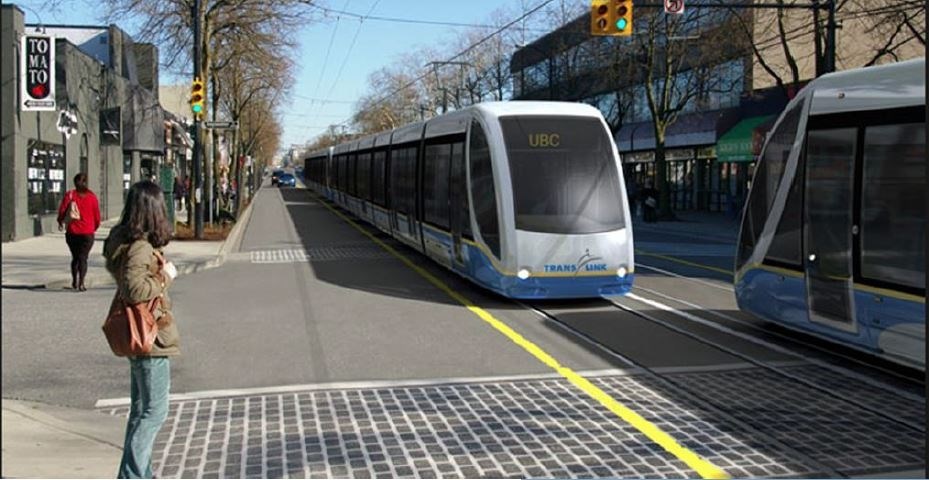The North Shore is ready for rapid transit now. This is the message my team has been delivering to business leaders, politicians and planners over the past two years, since our preliminary research findings uncovered superior development conditions compared to multibillion-dollar rapid transit corridors planned in Vancouver and Surrey.
Since then, we extended the scope of our initial study area (Ambleside to Capilano University) onwards to Metrotown as part of a new rapid transit corridor connecting the North Shore directly to the Expo Line, BCIT, Millennium Line, Hastings RapidBus and the West Coast Express (via a new PNE station).
Undoubtedly, over the past decade, there has been a significant negative slide in our quality of life and business competitiveness as the reliability of our transport system has faltered and buses were deemed the solution.
In light of well-placed density, a jobs/housing/amenities balance, and the millions of annual car trips to our mountain/canyon attractions, we feel that an efficient, integrated and affordable rail transit solution will deliver strong ridership and positive economic impacts for the North Shore and region.
My team’s recent work indicates favourable conditions in Burnaby as some of Western Canada’s tallest buildings have been developed in Brentwood and Metrotown, with plans for tens of thousands of additional jobs and housing units.
The growth of dense, suburban transit hubs along the Expo and Millennium Line will far exceed Vancouver’s development in the future – and the North Shore needs to be connected to the action.
Transit ridership is driven by jobs, housing and amenities within a five minute walk (400 m). Current population and employment within 400 metres of the Ambleside-Phibbs-Metrotown corridor totals 225,000 today, as compared to 100,000 in the proposed UBC subway corridor, and 50,000 in Surrey.
In the longer term, growth is much higher between Ambleside-Metrotown with 330,000 combined jobs and residents, as compared to 135,000 (UBC) and 80,000 (Surrey). Twenty per cent of long-term regional growth is slated for the North Shore and Burnaby, as opposed to 1.5% at UBC.
With only two routes across the harbour and 75% of current trips by car, there is a high potential for a significant shift to transit (unlike UBC) if a reliable rail link is established.
While I am pleased to see the recent BIRT study, I am concerned that SkyTrain is assumed and that the five shortlisted options are mostly focused on connecting Lonsdale with downtown, rather than including Ambleside-Phibbs.
The cost of a direct SkyTrain tunnel between downtown and Lonsdale would be enormous, as the length and/or depth of the harbour would cause major engineering challenges. At a cost of many billions of dollars, I do not believe that our leaders will pursue the tunnel options anytime soon, with some indicating it belongs in TransLink’s 2050 plan.
I believe we must bring rapid transit to the North Shore by the end of this decade.
We must agree on an integrated and innovative solution, including a route, technology and financing concept that will deliver good value for money.
It must bring significant benefits to users on Day 1, by connecting dense hubs in a time that is competitive with driving. From the Burnaby hubs, Coquitlam and Surrey would be reached in 20 minutes. The new PNE West Coast Express Station would offer direct connections to Maple Ridge in 30 minutes and downtown Vancouver in five minutes.
By adopting flexible light rail transit technology, the alignment could run on the surface (with signal priority) at a much lower cost (Canadian average $88 million/km) than elevated SkyTrain ($233 million/km in Surrey) or subway ($500 million/km on Broadway), while minimizing disruption to established neighbourhoods west of Lonsdale.
Where feasible (Lonsdale-PNE), elevated sections would maximize speed.
The establishment of partnerships with the federal government and CN Rail to replace the aging Second Narrows freight rail bridge would facilitate the development of a new bridge for freight rail, light rail and trucks (easing traffic on the Ironworkers Crossing), while leveraging multiple pools of funding from the public and private sector, and reducing the costliest part of any BIRT option to millions rather than billions.
With up to $10 billion being contemplated for rapid transit in Surrey and Vancouver this decade, we must ensure the North Shore is considered at the same time.
This will require immediate funding of around $2 million to develop a preferred concept within two years.
As a voter, I am watching to see who will commit to this – anything less will result in painful bus rides and clogged roads for decades to come.
Stephan Nieweler is a planning and transportation instructor, and doctoral candidate, in the department of geography at SFU. Prior to returning to academia, he was involved in the planning of rapid transit systems while based in the U.K., India, Toronto and at TransLink in Vancouver.
What are your thoughts? Send us a letter via email by clicking here or post a comment below.



